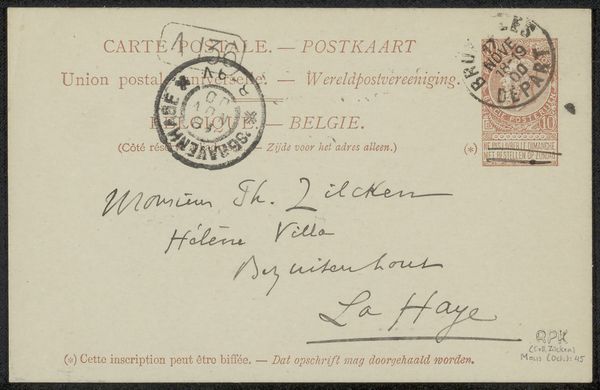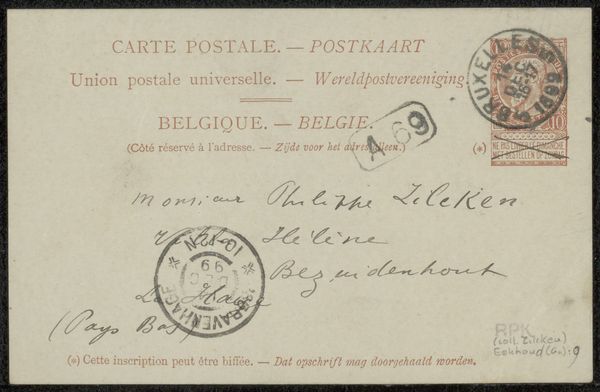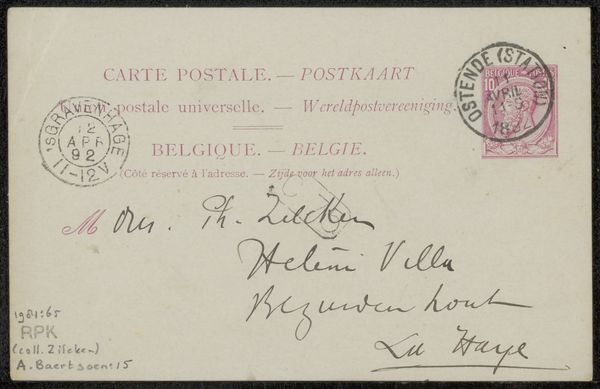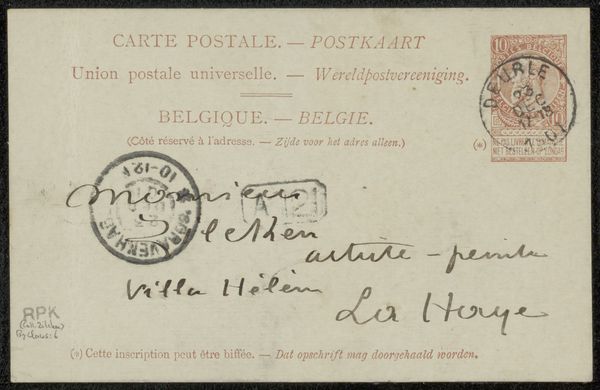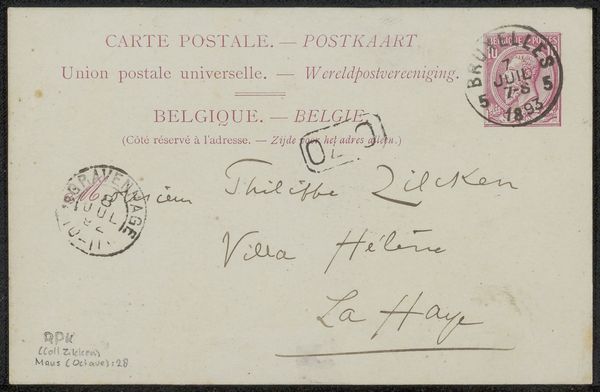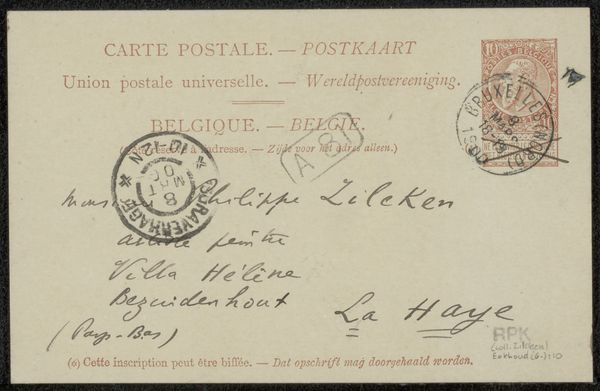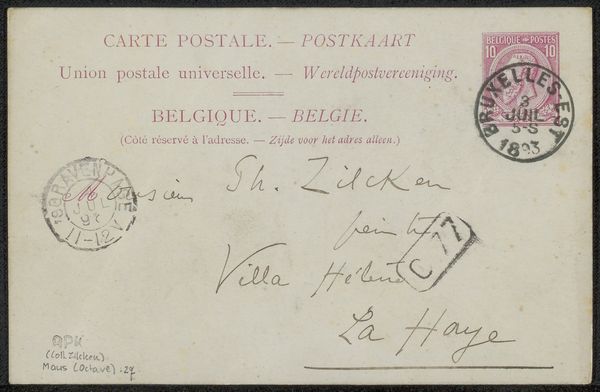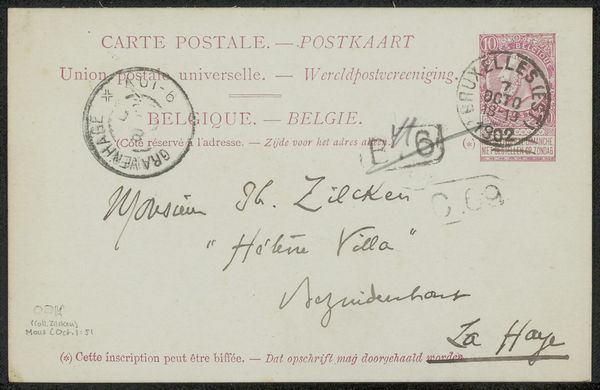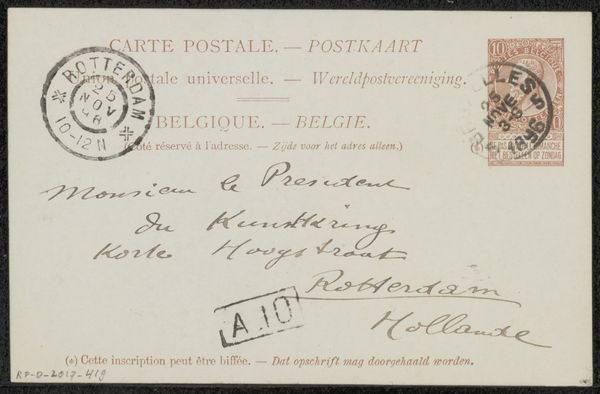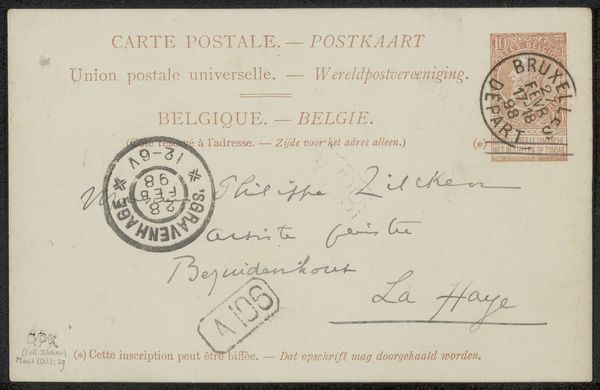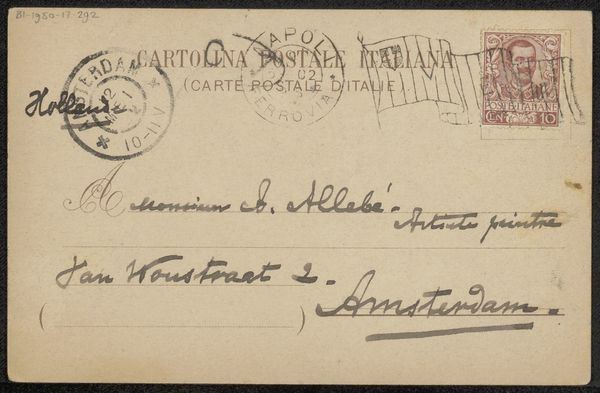
photography, ink, pen
#
photography
#
ink
#
pen-ink sketch
#
pen work
#
pen
#
calligraphy
Copyright: Rijks Museum: Open Domain
Curator: We’re looking at "Briefkaart aan Philip Zilcken," possibly created between 1900 and 1916. It’s a fascinating little piece featuring pen, ink, and photography. It shows the back of the postcard with calligraphy writing the recipient’s address and stamps on it. What’s your immediate impression? Editor: My first thought is how intimate it feels, like peeking at a private moment from over a century ago. The elegant handwriting and faded stamps speak of a slower time. But it also feels somewhat impersonal, merely documenting an act. Curator: Precisely. The choice of script tells us much. The very act of calligraphy lends a certain formality, an intentionality often missing in modern handwriting, making this correspondence read less pedestrian. Notice, too, the postal markings—literal stamps of bureaucratic systems, ensuring efficient distribution and commerce, influencing how we consume the "written" image today. Editor: I’m also drawn to the framing by these stamps and postal markings, anchoring the entire composition, elevating a simple mailing address into an almost sacred textual space of communication. What does the imagery suggest to you in the handwritten message? Curator: It depicts an address and nothing more, but that very information locates a person in time and space, creating a direct link to an individual and also hinting at the infrastructures and labor required to deliver it. It connects that person in Beuiten Hout to a wider network of distribution. It forces us to recognize postal service, for instance, not as background, but a technology to be grappled with and understood within its own historical and social situation. Editor: But consider the personal, human touch. This wasn’t simply about delivering a message; it was about maintaining a connection through visual cues embedded in the address, which could be more poetic than practical. This piece represents both distance and intimacy. Curator: I agree—I think it shows how visual language has always operated inside established structures, both embracing them, and subtly bending to suit specific contexts. Even something as seemingly utilitarian as this shows the powerful impact of material production and social process on a communicative work of art. Editor: It makes you consider all that it means to send or receive correspondence. An intriguing interplay between bureaucratic process and human connection, captured in a single image.
Comments
No comments
Be the first to comment and join the conversation on the ultimate creative platform.
